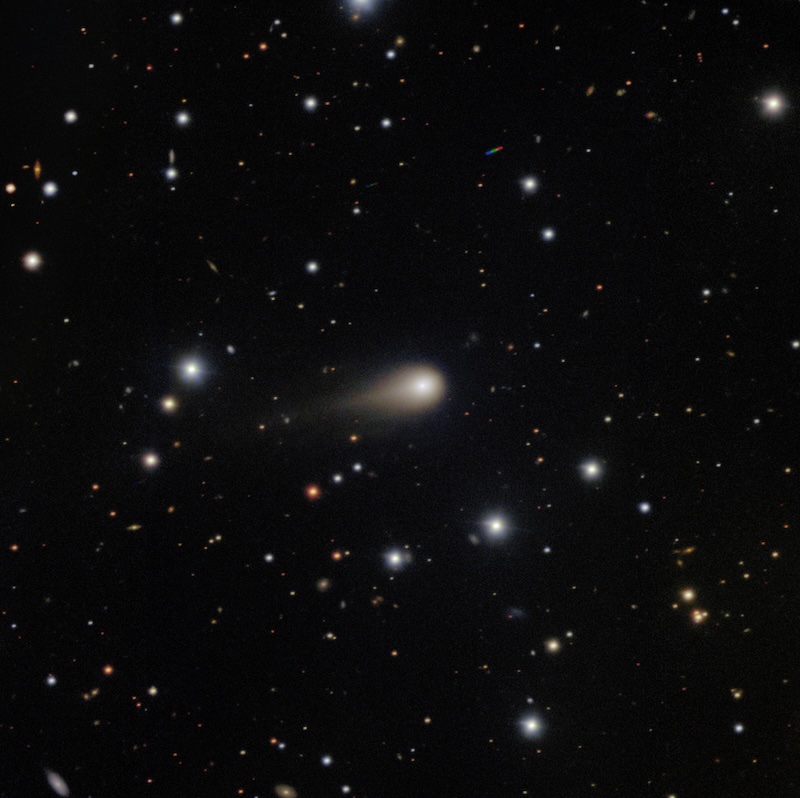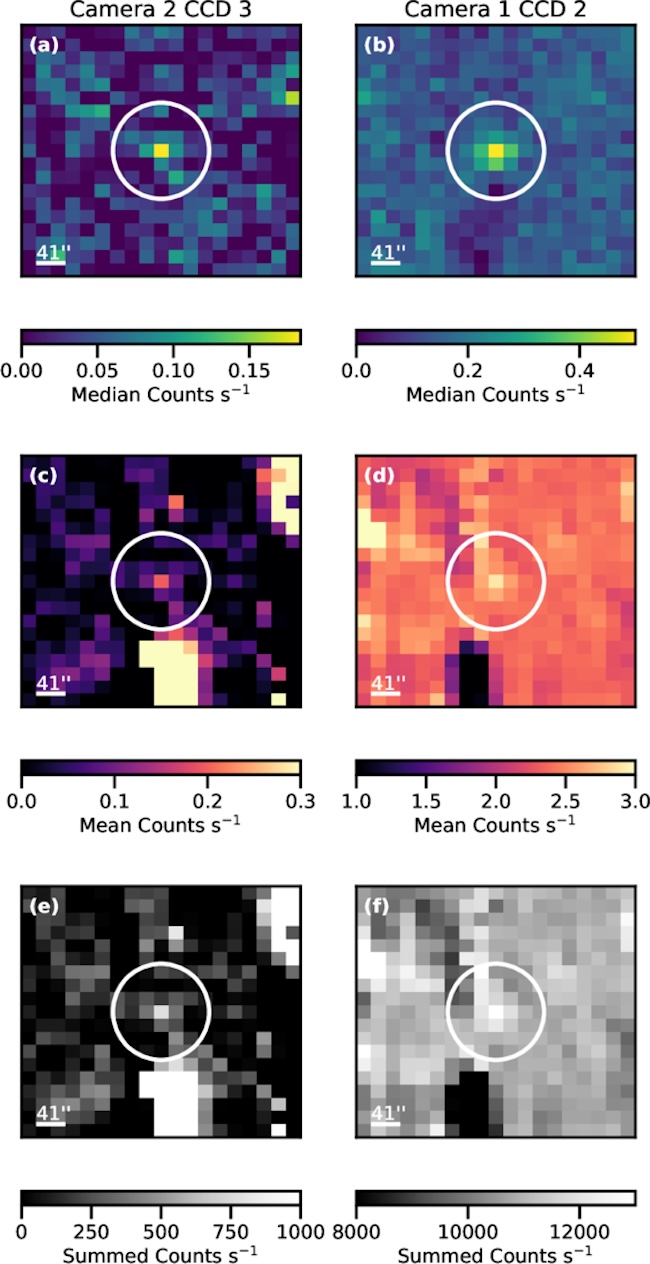Now Reading: New clues about comet 3I/ATLAS revealed in older images
-
01
New clues about comet 3I/ATLAS revealed in older images
New clues about comet 3I/ATLAS revealed in older images


- Comet 3I/ATLAS is the 3rd-known interstellar visitor to our solar system. It came from another star system.
- Researchers found some earlier images of the comet from before its official discovery in July.
- The newly found images provide important clues about 3I/ATLAS, including insights into its origin and composition.
Comet 3I/ATLAS, our 3rd interstellar visitor
A team of researchers, led by Michigan State University, has just completed a new study about the world’s 3rd-known interstellar object, labeled 3I/ATLAS. The scientists said on September 11, 2025, that they found earlier images of 3I/ATLAS from before it was officially discovered last July. The comet was in images that NASA’s TESS space telescope took last May. The images and other data provide important clues about comets originating in other planetary systems and how they compare to comets in our own solar system.
3I/ATLAS is only the 3rd-known interstellar object that astronomers have identified so far (hence the “3I” moniker). First, we spied the now-well-known ‘Oumuamua in 2017. Then, we saw 2I/Borisov in 2019. And now we have 3I/ATLAS, which is still fairly far from the sun. It will cross the orbit of Mars, sweeping near the planet, on October 3.
The researchers published their peer-reviewed findings in The Astrophysical Journal Letters on September 11, 2025.
Early images of comet 3I/ATLAS
Astronomers first found our interstellar visitor on July 1, 2025. The ATLAS survey telescope in Chile first spotted the object.
But researchers at Michigan State University later found earlier images of the comet. Those were from about two months before the official detection, from NASA’s Transiting Exoplanet Survey Satellite (TESS). Astronomers hadn’t identified the object at the time, as it just looked like a faint dot among thousands of background stars. But the images helped show that 3I/ATLAS really was interstellar and didn’t originate in our own solar system.
In addition, the images also show how the comet has evolved over time. In fact, they suggest it had been active for longer than first thought.
Lead author Adina Feinstein at Michigan State University said:
There are so few interstellar objects that we’ve detected in our solar system, and they each seem to be unique. 3I/ATLAS gives us an opportunity to study other solar systems up close and personal, without actually needing to visit them.
As soon as I realized 3I/ATLAS should be in these TESS images, I downloaded them as quickly as I could.
aww yeah ?? ? ??arxiv.org/abs/2507.21967
— ?Adina Feinstein PhD ? (@afeinstein20.bsky.social) 2025-07-30T01:37:23.999Z
Comet 3I/ATLAS starts to reveal its secrets
The images and other data gathered so far show comet 3I/ATLAS is rather unlike comets in our own solar system. Comets typically start to release water vapor and other gases as they get closer to the sun. But with 3I/ATLAS, the images revealed signs of activity much farther from the sun than usual.
Basically, that means it likely started to release other molecules, such as carbon monoxide and carbon dioxide.
Feinstein said:
That gives us an idea of what comets and asteroids could be made of in systems beyond our own sun. It’s always been assumed that other systems are different from ours, but now we have evidence of how different they might be.

Interstellar visitor comes into focus
After finding that the comet was in the TESS images, the researchers worked on making the images as clear as possible. First, they filtered out the light from nearby stars in the images. Then, they combined multiple images taken across the orbit of 3I/ATLAS.
This helped to bring out additional details of the faint object.

James Webb Space Telescope
Comet 3I/ATLAS will only be visible for another few months before it gets too far away again to observe with telescopes. But in the meantime, astronomers are conducting further observations, including with the James Webb Space Telescope. Indeed, those observations will be invaluable for learning as much about our visitor as we can before it slips back into interstellar space. As co-author John Noonan at Auburn University noted:
Capturing as many observations from this prediscovery period, where 3I/ATLAS may be in telescope images but wasn’t previously identified, is essential to our understanding of how these objects ‘turn on’ as they approach our sun. These interstellar objects have likely not been warmed significantly in millions, if not billions, of years, and any opportunity to see how they responded to that early heating is of interest.
Feinstein added:
Learning about other solar systems places humanity into context. One of life’s greatest questions is ‘are we alone in the universe?’ Each NASA mission gets us a little bit closer to answering this big, overarching question.
Recent observations have also shown that 3I/ATLAS is brightening more quickly than expected. Will it continue to brighten, or is this a temporary outburst? Only time will tell!
Bottom line: Researchers at Michigan State University have found earlier images of comet 3I/ATLAS not seen before. They provide new clues about this interstellar visitor.
Source: Precovery Observations of 3I/ATLAS from TESS Suggest Possible Distant Activity
Via Michigan State University/ EurekAlert!
Read more: Interstellar object 3I/ATLAS brightening quickly
Read more: Interstellar comet 3I/ATLAS shows comet tail in new image
The post New clues about comet 3I/ATLAS revealed in older images first appeared on EarthSky.
Stay Informed With the Latest & Most Important News
Previous Post
Next Post
-
 012024 in Review: Highlights from NASA in Silicon Valley
012024 in Review: Highlights from NASA in Silicon Valley -
 02Panasonic Leica Summilux DG 15mm f/1.7 ASPH review
02Panasonic Leica Summilux DG 15mm f/1.7 ASPH review -
 03How New NASA, India Earth Satellite NISAR Will See Earth
03How New NASA, India Earth Satellite NISAR Will See Earth -
 04And Thus Begins A New Year For Life On Earth
04And Thus Begins A New Year For Life On Earth -
 05Astronomy Activation Ambassadors: A New Era
05Astronomy Activation Ambassadors: A New Era -
06SpaceX launch surge helps set new global launch record in 2024
-
 07Space Force plans new ‘Futures Command’ amid pressure to speed up modernization
07Space Force plans new ‘Futures Command’ amid pressure to speed up modernization




















